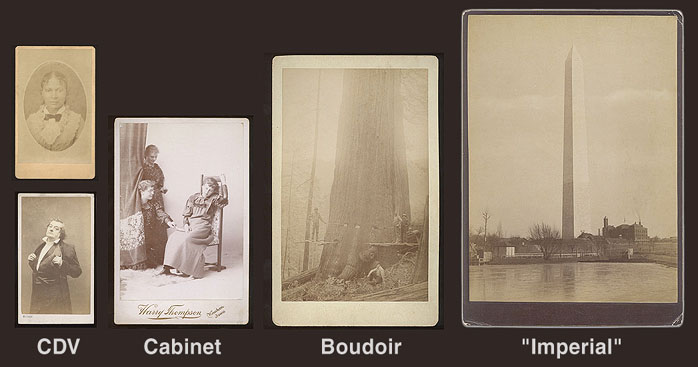19th Century Card-Mounted Photograph Sizes
Carte-de-Visite (CDV) and Cabinet Cards
A popular format for nineteenth-century photographs was the card-mounted image, often intended for storage in albums sold with slots corresponding to standard sizes. The first popular card-mounted format was the Carte-de-Visite or "CDV" format, which derived its size from period visiting cards (today's business card) -- approximately 4 x 2.5 inches (10x6.5 cm). A later popular format was the Cabinet Card, a photograph mounted on card about 6.5 x 4.25 inches (16x11 cm) in size. A variety of other sizes came to accompany the standard Cabinet Card, notably the slightly longer and wider Boudoir cabinet card, often used for landscape images.
See illustration below for comparison of some common sizes of 19th century card-mounted photographs:

|
With time, a large number of additional, variant mounting sizes came into use, which are usually specified for descriptive purposes simply by giving dimensions of the card. An image described as "Cabinet Card" format with no further specification is normally understood to be a card in standard "Cabinet" size, i.e., about 6.5 x 4.25 inches (16x11 cm).
Beginning in the early 20th Century, photographs created by studio photographers were frequently attached to thin card or inset into thin card windows, and housed in decorative card folders. Photographs presented in this fashion are also sometimes referred to as cabinet photographs.

Above: A so-called "Cabinet Photograph" -- studio photograph in paper folder circa 1920.
![]()
Copyright 2014 by Christopher Wahren